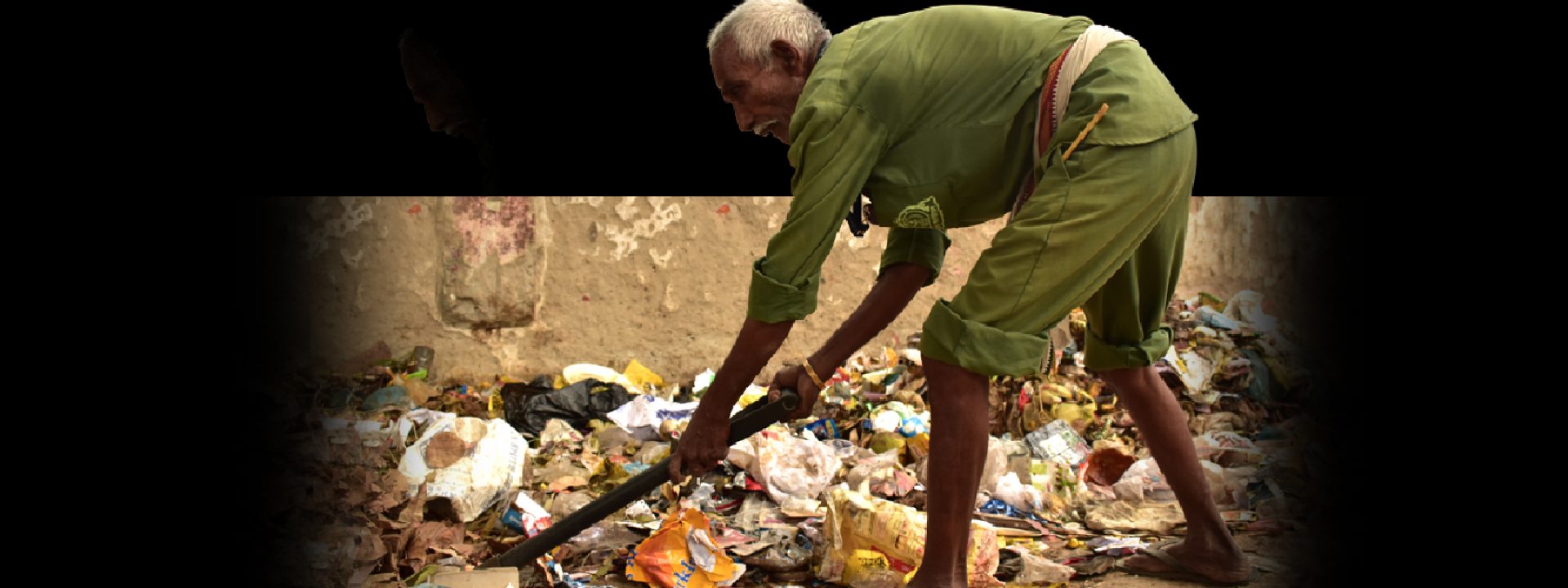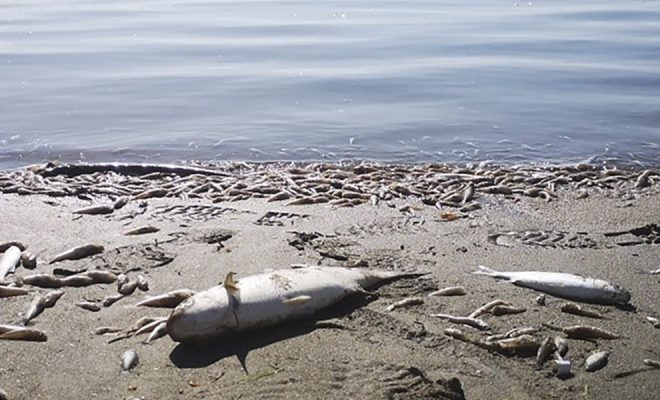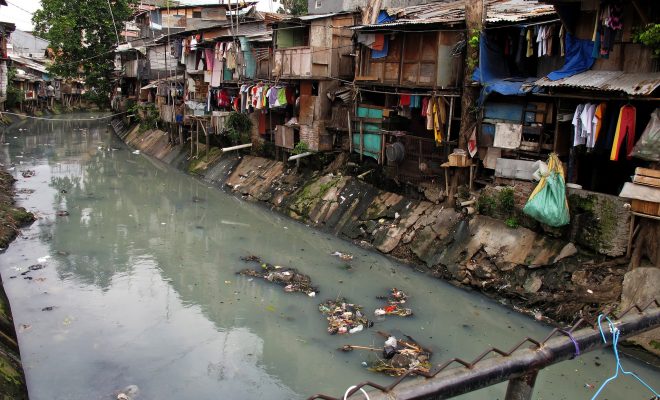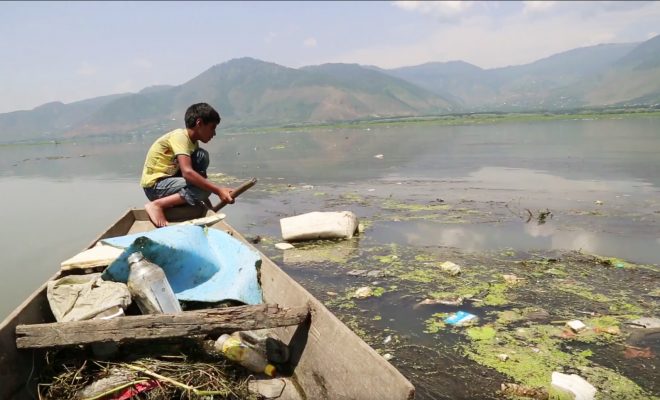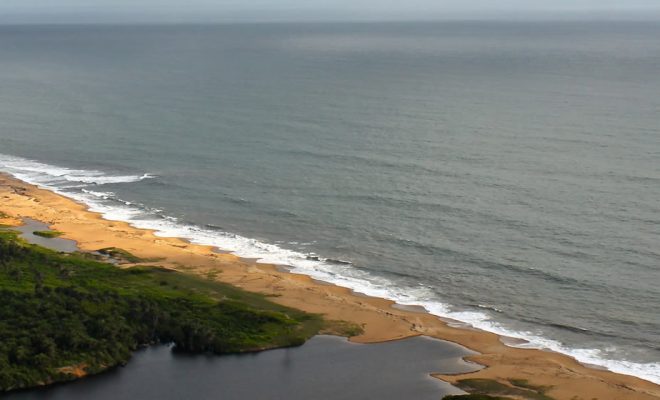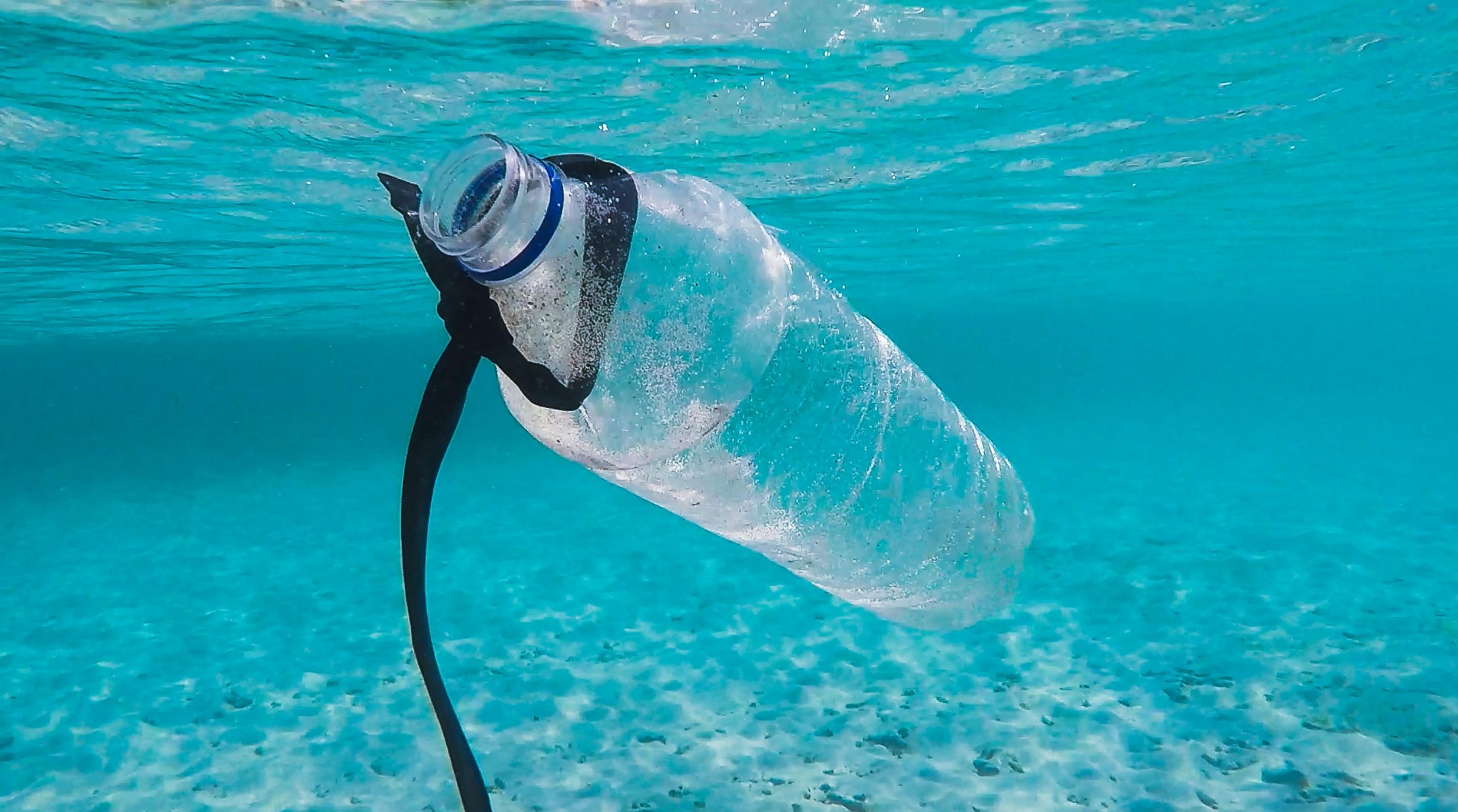
Plastics are causing a disastrous environmental damage. © Brian Yurasits -unsplash
In the 1970s, there were reasons for economists to declare that humanity had entered the Plastic Age. Since the chemists Karl Ziegler and Giulio Natta respectively developed polyethylene and polypropylene in the early 1950s, plastic has accompanied our economic, technological and social development, transforming our lives by providing products we can hardly live without. In one single decade, the significance of their studies was such that both scientists received the Nobel Prize in Chemistry in 1963.
By then, the production of plastic materials had already spread to all industrial sectors and was constantly increasing: by 1960 it had multiplied by 16, reaching 25 million tons. After growing rapidly year after year, the production of plastic exceeded 359 million tons in 2018 and current forecasts predict it will reach 1.8 billion tons by 2050.
This growth has led to serious problems. Two years ago, a study by the University of Georgia (USA), determined that 8.3 billion tons of plastic had accumulated on the planet until 2015 and only 9 % of it had been recycled; that is, 6.3 billion tons became waste. Of these, approximately 12 % have been incinerated and the remaining 79 %, almost 5 billion, have accumulated in the soil and water of the planet. And almost all of it is still there.
A serious problem for the balance of the sea
Plastics are currently the most visible pollution on Earth. They are present in the soil and in practically all riverbeds in inhabited areas and they accumulate in the sea.
In the debate Waste on Earth. Waste in the water, organized by Barcelona i la Mar and the We Are Water Foundation, the researcher of the Institut de Ciències del Mar (ICM-CSIC), Cristina Romera, summarized the drama: ”Around 13 million tons of solid waste end in the ocean every year. This is the equivalent of a garbage truck per minute. 80 % of it is plastic and 80 % of this plastic comes from land sources: mainly rivers and wastewater.”
It is difficult to calculate the exact volume of plastics present in the waters of the Earth. According to Romera, 99 % of the marine plastic is lost: “We know how much gets there, but we don’t know where it is. We don’t know if it is sunk or of it slips through the nets when we try to catch it.”
Data from the Ellen MacArthur Foundation reveal that, in a normal scenario, the sea might end up containing one ton of plastic for every three tons of live fish by 2025. Should this trend continue, by 2025 there will be more plastic than fish in the sea in terms of weight.
The damages caused are considerable and can be much worse. The risk rating agency Standard & Poor’s estimated that the deterioration caused by plastic in natural capital had reached 118.6 billion euros every year. This estimation includes the loss of biodiversity, the damages to coastal tourism and fishing.
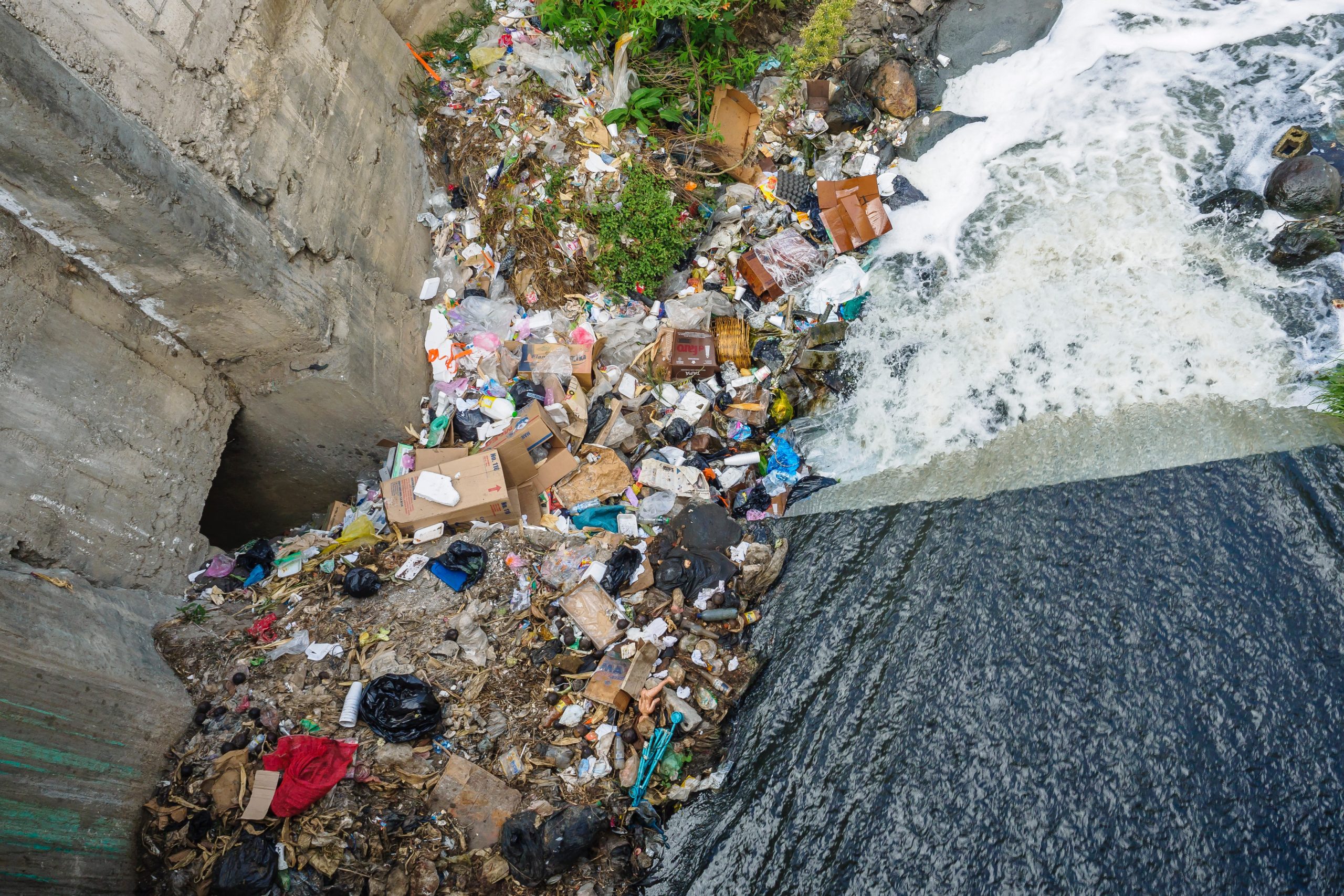
Plastics are currently the most visible pollution on Earth. © Alexander Schimmeck- unsplash
Microplastics: the ones that cannot be seen
The presence of plastic in microparticles of less than 5 mm, called microplastics, is estimated as potentially more dangerous to aquatic ecosystems and there is very little information on it. To understand the importance of the problem it is convenient to classify them according to their origin: primary and secondary.
The primary ones are those that reach water as microparticles. Most of them are generated by domestic and urban activity. Romera pointed at textile fibers from washing cycles as the more numerous ones in this kind of pollution: “They represent 35 % of the microparticles found. We must take into account that one single synthetic fiber garment can release 2,000 microplastics in one wash.” The microparticles resulting from the friction from rubber with asphalt appear in second place, with 28 %; the third position, with 24 %, is for dust from buildings; with 7 %, urban paintings; the painting released by ships represents 7 % of the particles and the remaining 2 % comes from hygienic and cosmetic products. This waste is washed away by sewers and rain and ends up in the sea.
Secondary microplastics derive from the degradation of abandoned plastics in nature. They reach the water after being spilled directly or after staying for some time on the river banks or sea shores. The main degradation agent of plastic is sunlight, which tends to shred it. The Spanish researcher points out notable differences in the speed of degradation depending on the environment: “Plastics degrade more on beaches due to sunlight and the presence of oxygen. In the sea, this process slows down as the temperature decreases and there is less oxygen and sunlight. Plastics practically do not degrade in the depths.”
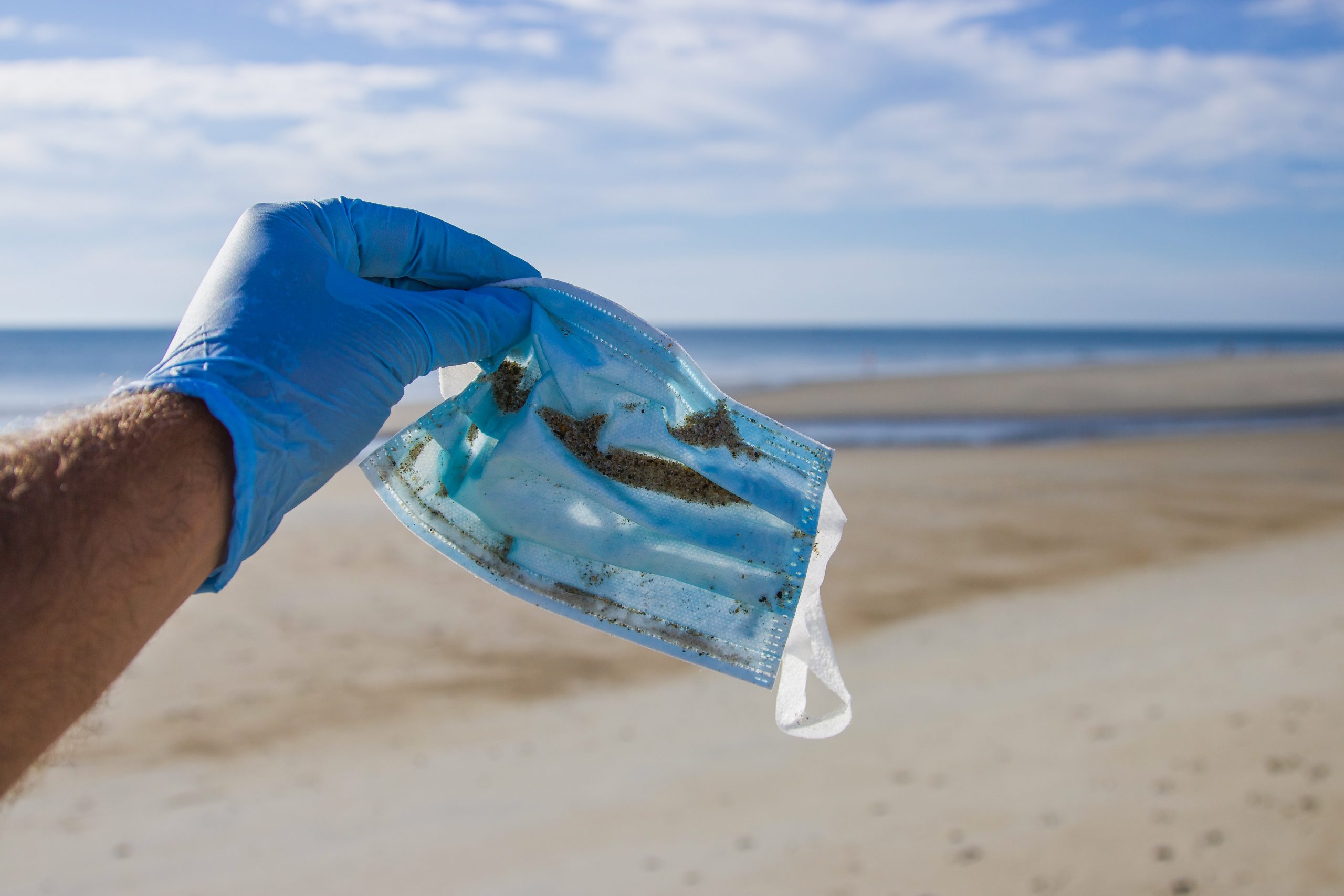
These last few months, anti-coronavirus masks have joined the llist “use and throw away”, as bottles, caps, wrappers, supermarket bags, straws tons of them also end up negligently in nature. © Unidobrian Yurasits -unsplash
Putting an end to secondary microplastics means putting an end to the dumping of cigarette buts and single-use plastics, such as bottles, caps, wrappers, supermarket bags, straws, etc… According to Romera’s research, 50 % of the plastics found are included in this “use and throw away” group, and their very short lifespan, frequently a few seconds, contrasts with the time they take to degrade, sometimes centuries. In these last few months, anti-coronavirus masks have joined this list, as tons of them also end up negligently in nature.
Fighting microplastics that are already present in water is very difficult nowadays. “We don’t even know what minimum size plastic can reach once it is fragmented in tiny pieces or where it is. Cleaning the ocean is nearly impossible, Romera declares.
The current damage caused by microplastics is difficult to assess. The oceanographer points out that fibers with a textile origin have been detected in salt, fish and drinking water. Their damage to human health is not known for sure, although it has been found that they are altering the food chain of some fish that eat them and they are also vectors for other kinds of pollution, such as the one caused by additives present in nearly all plastic products and other chemical pollutants that particles collect in their degradation.
A threat for the carbon cycle
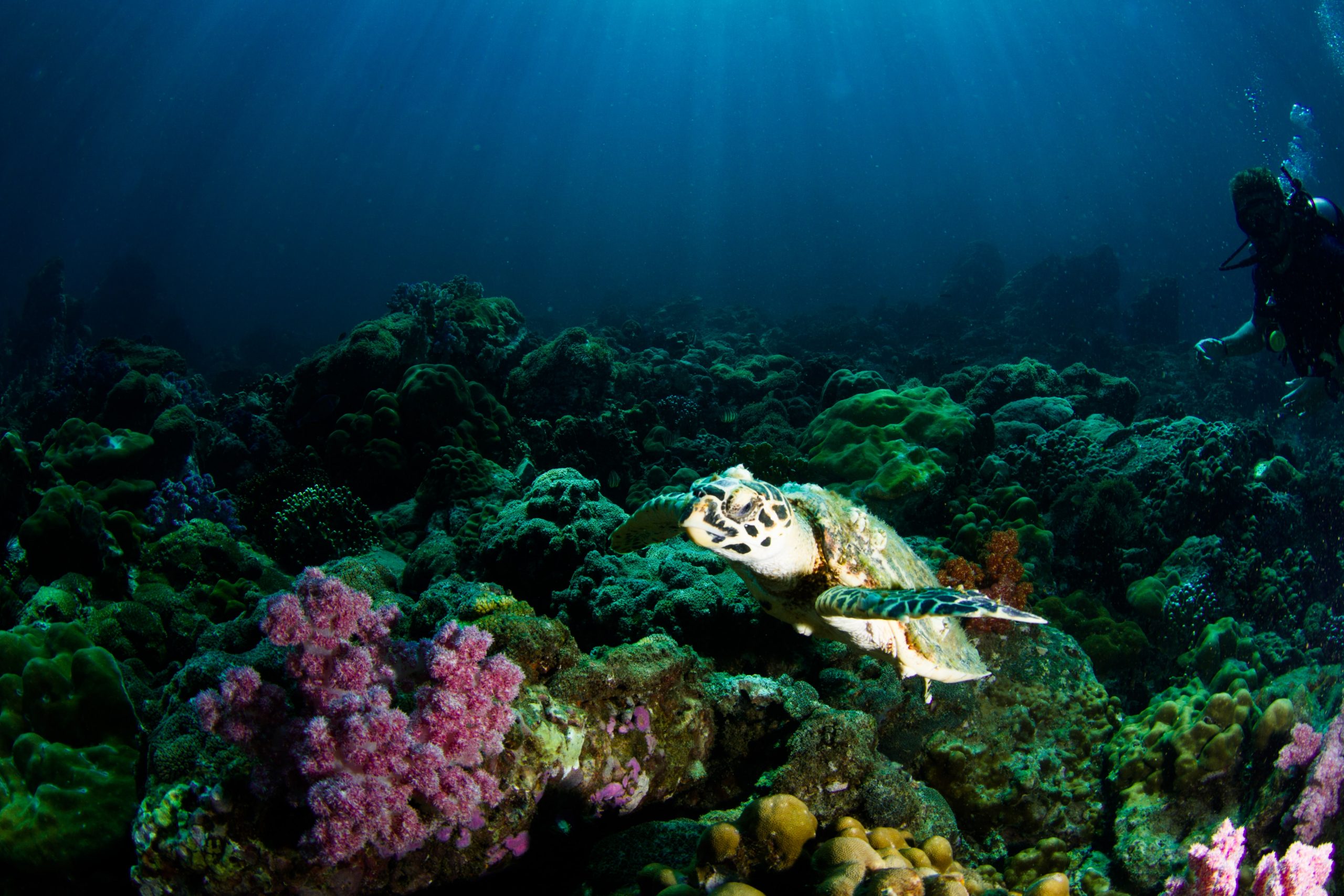
The ocean is the other lung of the Earth © Milos Prelevic-unsplash
Along with forests, oceans are the other great lung of the Earth: they absorb 25 % of the carbon dioxide (CO2) and release 50 % of the oxygen (O2), and they are also a huge carbon sink: it is estimated that they contain 700 gigatons (700 billion tons) of dissolved organic carbon (DOC), nearly as much as there is in the atmosphere in the form of CO2 (700 gigatons). The natural cycle of carbon links both sinks on which the evolution of climate depends: any alteration of the carbon present in the ocean has an impact on that of the atmosphere and vice versa.
DOC is mainly produced by phytoplankton, which consumes CO2 from the atmosphere to carry out its photosynthesis. This is how this carbon is “fixed” in the ocean by cells of phytoplankton and their waste and does not return to the atmosphere. But a part of it is consumed by bacteria that are the base of the marine trophic chain. When the animals in this chain breathe, they return part of this CO2 to the atmosphere, but the rest will continue to be a part of this huge carbon sink, the sea.
However, the plastic in the sea can alter this process. The research team of the CSIC, led by Romera, proved in a study that the approximately 250,000 tons of plastic estimated to be floating in the sea release 23,600 tons of organic carbon every year, which dissolves into the ocean. This additional organic carbon could alter food webs and the natural carbon cycle as it is consumed by bacteria that degrades it. This is important to assess the return of CO2 to the atmosphere, as it is one of the greenhouse gases.
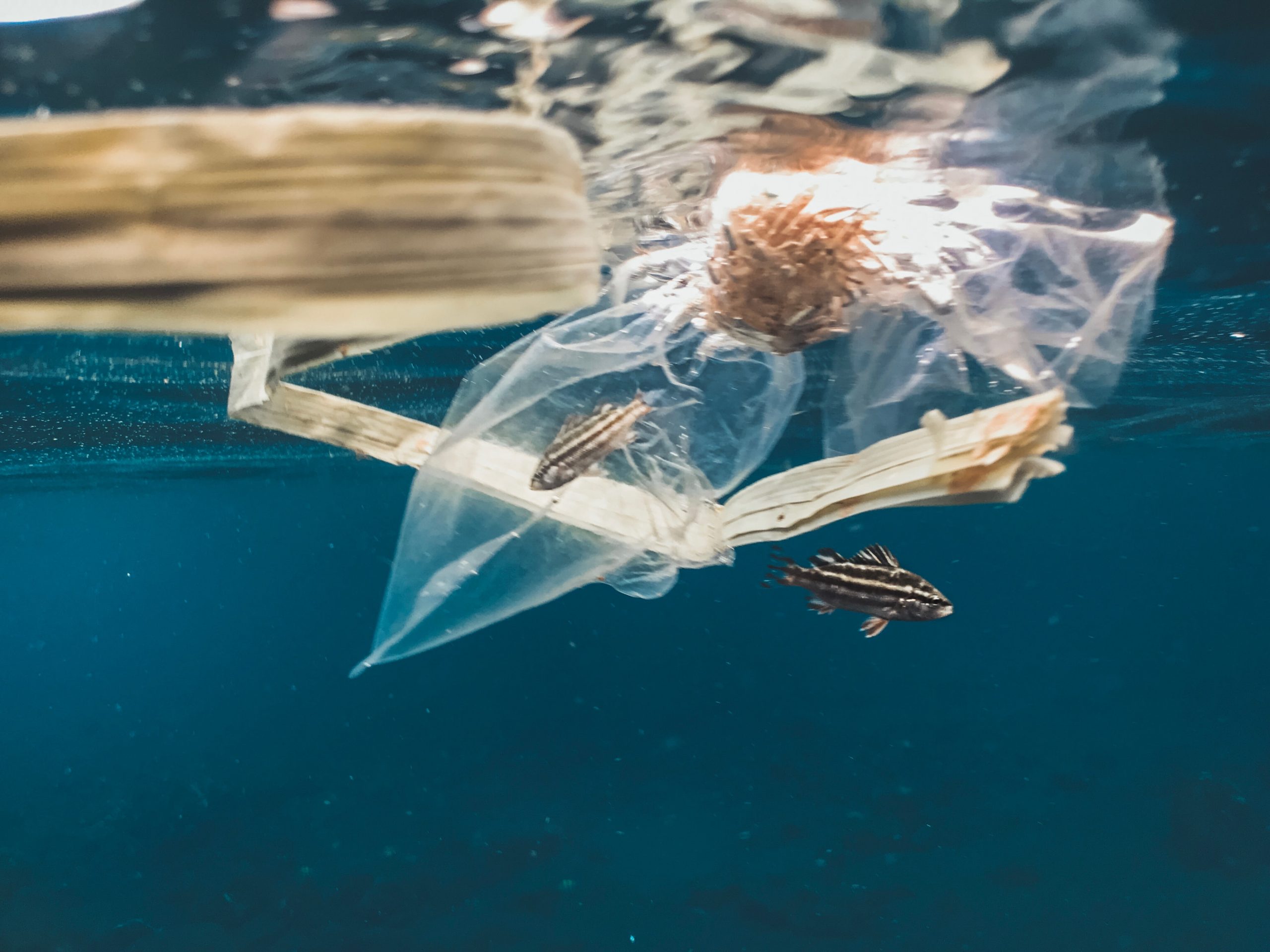
The research team of the CSIC, led by Romera, proved in a study that the approximately 250,000 tons of plastic estimated to be floating in the sea release 23,600 tons of organic carbon every year, which dissolves into the ocean. © Naja Bertolt- unsplash
The solution is complex
The development of biodegradable plastics seems a solution for some products like the single use ones. However, they are not a global solution to the problem as the biodegradation process does not usually happen spontaneously in nature. On the other hand, biodegradable plastic produced from vegetable products (potatoes, hay, etc) is limited due to the availability of land and water. Moreover, its production has an environmental impact and its recycling is complicated as it cannot be mixed with conventional plastic.
Plastic, in its multiple versions, is everywhere and most times there is no social awareness that thanks to it we have been able to evolve technologically, live safer and healthier and improve our quality of life. The development of almost all the technological challenges of humanity and the growth of all industrial sectors mostly depend on the development of lighter plastic materials, with better mechanical and electrical properties, more resistant to heat, light and chemical agents.
The boost of agriculture in the poorest areas also depends partly on plastic. According to FAO, the loss of food in Europe is of only 3 % thanks to the use of packing solutions allowed by plastic; while in developing countries, where the use of plastic packaging is not widespread, these losses can reach 40 %.
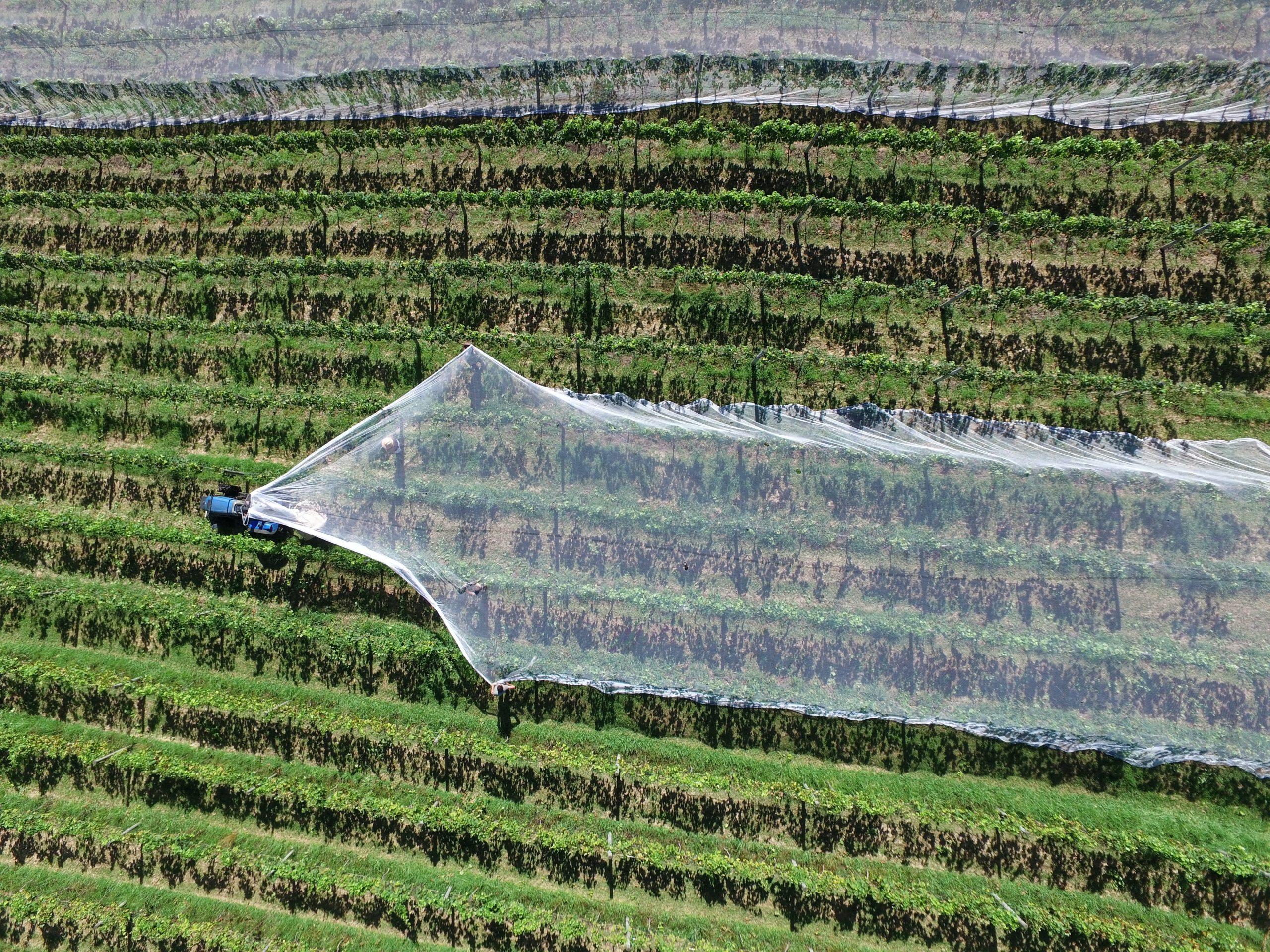
The economy of plastics is highly fragmented. The lack of standards throughout the value chain has allowed the proliferation of materials, formats, labeling, collection schemes, classification models and reprocessing systems that generate incoordination. © Colin Watts-unsplash
Legislation has already started to restrict the use of single use plastics, especially in Europe, but the problem will not be solved globally until the most important producers like China, all Asian countries and the USA do the same. Romera highlights that the main producers are also the ones that recycle less and incinerate their plastic waste: “Only a small percentage that does not reach 30 % is recycled and 24 % is incinerated. In Europe 30 % is recycled, in China 25 % and in the USA only 9 %. As for incineration, the ones that produce the most also incinerate less: Europe, 40 %, China 30 % and the USA 16 %.”
The economy of plastics is highly fragmented. The lack of standards throughout the value chain has allowed the proliferation of materials, formats, labeling, collection schemes, classification models and reprocessing systems that generate incoordination, prevent the development of effective recycling markets and make it difficult for the public to understand, thereby creating confusion.
In this context, the evolution towards circular economy reveals itself as the only way to end with the progressive and harmful pollution of water. Not only in the plastic industry, but in all. It is the only model that will allow us to end global pollution and attain all SDGs. But to do it an important effort in terms of global awareness, governance and communication is required. Beyond the implementation of the circular economy, plastic users need to be aware of the danger we have in our hands when we consume it and act responsibly. With the help of science, we will achieve it.


